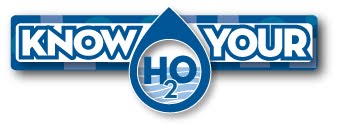
By Rob Davis on Wednesday, Jan. 7, 2009 in the Voice of San Diego
Centreville, Va. -- Tucked behind evergreens, down a long lane in an otherwise anonymous stretch of this Washington, D.C. suburb south of Dulles International Airport, sits a facility that provides San Diego with the best evidence that it's safe to fill drinking water reservoirs with purified sewage.
Here, a treatment plant has been purifying sewage and dumping the clean water into the Occoquan Reservoir, a source of drinking water for 1 million residents of Northern Virginia's densely populated suburbs in Fairfax and Prince William counties.
And they've been doing it 30 years.
The sewage arrives here at the Millard H. Robbins Jr. Water Reclamation Plant from the toilets of 275,000 nearby residents. A day-and-a-half later, after being disinfected and stripped of its contaminants, it washes down a wide concrete spillway into Bull Run, the Occoquan Reservoir tributary made famous by its Civil War battles.
In dry weather, that purified sewage spends three months meandering and mixing in the sprawling tree-lined reservoir, making its way 17 miles downstream to a dam, where a local water provider draws it out, treats it to be safe for human consumption -- it picks up contaminants along the way from urban runoff -- and pipes it to homes.
The facility's existence directly counters one of the talking points Mayor Jerry Sanders has frequently recited as a reason for objecting to the City Council's plan to recycle sewage as a drinking water source. Sanders has claimed that San Diego would be the first municipality anywhere to pipe purified sewage into a drinking water reservoir. He made that claim in October and again in December when articulating his opposition to the council's $11.8 million pilot study of recycled sewage.
"I want to make it very clear," Sanders said at a Dec. 4 press conference. "No one else has done what we're being asked to do. People confuse us with Orange County, people confuse it with a lot of other places. No one else has ever talked about putting recycled water into a reservoir and then using it for drinking water. That's what we'll be doing testing on to see if that can even work."
In Northern Virginia, that conversation happened in the 1970s. And the region found that recycling sewage is effective and safe, said Charles Boepple, executive director of the Upper Occoquan Service Authority, which operates the sewage recycling facility.
"We have been doing exactly what San Diego is exploring for 30 years," Boepple said.
CLICK HERE for the complete article.

No comments:
Post a Comment